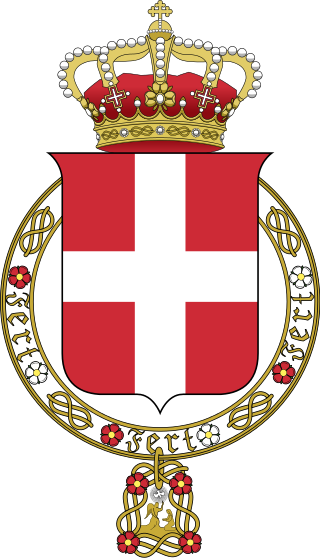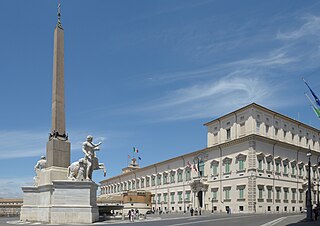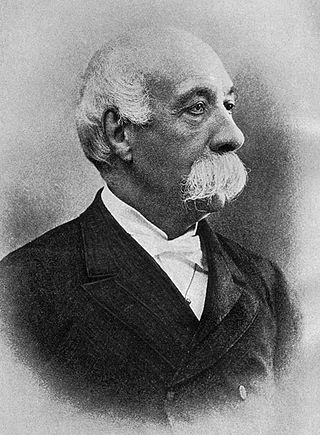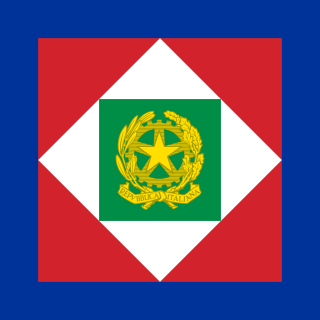
An institutional referendum was held by universal suffrage in the Kingdom of Italy on 2 June 1946, a key event of contemporary Italian history. Until 1946, Italy was a kingdom ruled by the House of Savoy, reigning since the unification of Italy in 1861 and previously rulers of the Kingdom of Sardinia. In 1922, the rise of Benito Mussolini and the creation of the Fascist regime in Italy, which eventually resulted in engaging the country in World War II alongside Nazi Germany, considerably weakened the role of the royal house.

The House of Savoy is an Italian royal house that was established in 1003 in the historical Savoy region. Through gradual expansion, the family grew in power from ruling a small Alpine county northwest of Italy to absolute rule of the Kingdom of Sicily from 1713 to 1720, when they were handed the island of Sardinia, over which they would exercise direct rule from then onward.

Charles III was King of Spain in the years 1759 to 1788. He was also Duke of Parma and Piacenza, as Charles I (1731–1735); King of Naples, as Charles VII; and King of Sicily, as Charles III (1735–1759). He was the fourth son of Philip V of Spain and the eldest son of Philip's second wife, Elisabeth Farnese. He was a proponent of enlightened absolutism and regalism.

Archibald Philip Primrose, 5th Earl of Rosebery, 1st Earl of Midlothian, was a British Liberal Party politician who served as Prime Minister of the United Kingdom from March 1894 to June 1895. Between the death of his father, in 1851, and the death of his grandfather, the 4th Earl of Rosebery, in 1868, he was known by the courtesy title of Lord Dalmeny.

The Quirinal Palace is a historic building in Rome, Italy, one of the three current official residences of the President of the Italian Republic, together with Villa Rosebery in Naples and the Tenuta di Castelporziano, an estate on the outskirts of Rome, some 25 km from the centre of the city. It is located on the Quirinal Hill, the highest of the seven hills of Rome in an area colloquially called Monte Cavallo. It has served as the residence for thirty popes, four kings of Italy and twelve presidents of the Italian Republic.
Rosebery or Roseberry may refer to:

Francesco Crispi was an Italian patriot and statesman. He was among the main protagonists of the Risorgimento, a close friend and supporter of Giuseppe Mazzini and Giuseppe Garibaldi, and one of the architects of Italian unification in 1860. Crispi served as Prime Minister of Italy for six years, from 1887 to 1891, and again from 1893 to 1896, and was the first prime minister from Southern Italy. Crispi was internationally famous and often mentioned along with world statesmen such as Otto von Bismarck, William Ewart Gladstone, and Lord Salisbury.

Agostino Depretis was an Italian statesman and politician. He served as Prime Minister of Italy for several stretches between 1876 and 1887, and was leader of the Historical Left parliamentary group for more than a decade. He is the fourth-longest serving Prime Minister in Italian history, after Benito Mussolini, Giovanni Giolitti and Silvio Berlusconi, and at the time of his death he was the longest-served. Depretis is widely considered one of the most powerful and important politicians in Italian history.
An official residence is a residence designated by an authority and assigned to an official, and may not always be the same place where the office holder conducts their official functions or lives.

The nobility of Italy comprised individuals and their families of the Italian Peninsula, and the islands linked with it, recognized by the sovereigns of the Italian city-states since the Middle Ages, and by the kings of Italy after the unification of the region into a single state, the Kingdom of Italy.

The president of Italy, officially titled President of the Italian Republic, is the head of state of Italy. In that role, the president represents national unity, and guarantees that Italian politics comply with the Constitution. The president is the commander-in-chief of the Italian Armed Forces and chairs the High Council of the Judiciary. A president's term of office lasts for seven years. The incumbent president is former constitutional judge Sergio Mattarella, who was elected on 31 January 2015, and re-elected on 29 January 2022.

The Villa Floridiana is a monumental house located amid a large park in the Vomero quarter in Naples, southern Italy. It overlooks the western Neapolitan suburbs of Chiaia and Mergellina.

The Villa Pignatelli is a museum in Naples in Southern Italy. The villa is located along the Riviera di Chiaia, the road bounding the north side of the Villa Comunale on the sea front between Mergellina and Piazza Vittoria.

Palazzo Donn'Anna is a historic residence in Naples, Italy. It sits prominently at water's edge at the beginning of the Posillipo coast, just west of the Mergellina boat harbor. The building is on the site of the so-called "Rocks of the Siren" and, indeed, was originally called La Villa Sirena.

Villa Wolkonsky is the official residence of the British ambassador to Italy in Rome. The entrance to the villa is located at 4, Via Ludovico di Savoia.

The Chigi Palace is a palace and former noble residence in Rome which is the seat of the Council of Ministers and the official residence of the Prime Minister of Italy. Since 22 October 2022, the tenant of the Chigi Palace has been Prime Minister Giorgia Meloni, although she does not live in the building. It is located in the Piazza Colonna, next to Palazzo Montecitorio, seat of the Chamber of Deputies.

Agostino Bertani was an Italian revolutionary and physician during Italian unification.

The Royal Villa is a historical building in Monza, northern Italy. It lies on the banks of the Lambro river, surrounded by the large Monza Park, one of the largest enclosed parks in Europe.


















